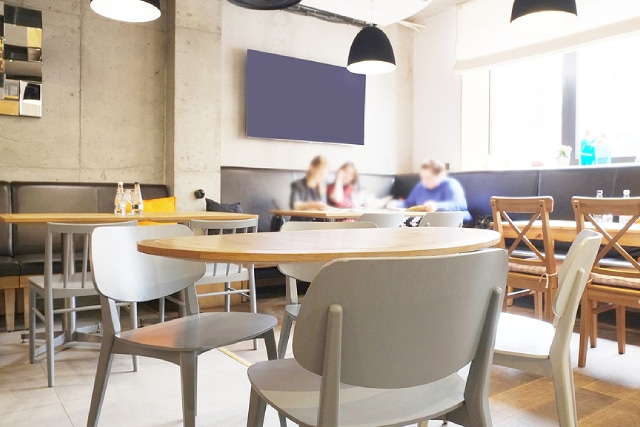
Creating a welcoming and prosperous environment is crucial for any restaurant, as the energy in the space can directly affect customer satisfaction, staff performance, and overall business success. In Feng Shui, the arrangement of furniture, colours, lighting, and even the flow of traffic are all considered important factors that influence the energy (Qi) of a restaurant. By optimising the layout of your restaurant according to Feng Shui principles, you can create a space that attracts positive energy, encourages a steady flow of customers, and enhances the dining experience.
In this article, we’ll explore the best Feng Shui layouts for restaurant interiors, offering tips on how to improve your restaurant’s energy, enhance customer experience, and boost success.
1. The Power of the Entrance
In Feng Shui, the entrance to a space is considered one of the most important elements because it is the primary point where energy enters. For a restaurant, this means that the way customers first experience the space will set the tone for their entire visit.
The entrance should be open and inviting, with no obstructions blocking the door. A clean, clutter-free entrance will allow positive energy to flow into the restaurant, welcoming guests and promoting a sense of comfort. Avoid placing large, heavy furniture or plants that may block the entrance or create a feeling of congestion. Additionally, ensure that the restaurant’s sign is clear and visible, making it easy for potential customers to find your business.
To enhance the flow of positive energy into your restaurant, consider consulting a Feng Shui consultant in Singapore for expert advice on how to improve the entrance area.
2. Layout and Seating Arrangement
The seating arrangement in your restaurant plays a significant role in determining the energy flow throughout the space. In Feng Shui, it’s important to arrange tables and chairs in a way that promotes a harmonious flow of energy while ensuring comfort for your guests.
One key concept in Feng Shui is the command position, which applies to the seating arrangement. The command position refers to a place where individuals have a clear view of the entire room, particularly the entrance. For restaurant seating, this means ensuring that guests can see the door without being directly in line with it. This positioning creates a sense of security and control, which is vital for customers’ enjoyment.
Another important consideration is to avoid placing guests with their backs to the door. If this is unavoidable, you can remedy the situation by placing a mirror that reflects the entrance or positioning staff members to be aware of customer needs.
3. The Flow of Qi and Pathways
A successful restaurant layout should ensure that the energy flows smoothly from one area to another. In Feng Shui, blocked or stagnant energy is considered unfavourable, as it can lead to sluggishness or poor business performance.
Ensure that your restaurant’s pathways and corridors are clear and spacious, allowing for easy movement of both staff and customers. The flow of traffic should be well-organised and natural, preventing bottlenecks and uncomfortable congestion. If there are areas where customers or staff frequently gather, consider adding plants or decorative features to improve the flow of Qi and create a positive atmosphere.
4. Choosing the Right Colours for Your Restaurant
Colour is a powerful tool in Feng Shui, as different colours influence different emotions and energy. When selecting colours for your restaurant, it’s essential to choose hues that promote appetite, energy, and a welcoming ambience.
- Red is a vibrant and energising colour, making it ideal for stimulating appetite and creating an exciting atmosphere.
- Yellow is warm and inviting, promoting happiness and comfort.
- Green represents freshness and vitality, perfect for restaurants with a focus on healthy or vegetarian cuisine.
- Brown and earth tones create a grounding effect, enhancing feelings of stability and calmness.
5. Lighting and Ambience
Lighting is another crucial element in Feng Shui that can significantly impact the overall atmosphere of your restaurant. A well-lit space creates a warm and inviting ambience, while dim or harsh lighting can create a negative or uncomfortable environment.
In Feng Shui, natural light is always preferred, so try to make the most of windows and skylights. However, if your restaurant relies on artificial lighting, use soft, warm lighting to create a cosy, intimate atmosphere. Avoid using overly bright or cold lighting, as it can make guests feel uneasy.
For larger spaces, consider using pendant lights or chandeliers to enhance the dining experience and add a touch of elegance.
Conclusion
Optimising your restaurant’s interior layout according to Feng Shui principles can make a profound difference in the energy of your space, helping you create an environment that is not only welcoming but also conducive to success. By focusing on key elements like the entrance, seating arrangement, colour scheme, and lighting, you can enhance the flow of positive energy, encourage customer satisfaction, and ensure long-term prosperity.
For expert Feng Shui guidance tailored to your restaurant’s needs, consult Kevin Foong Consulting Group. We offer the insights and strategies to transform your space into a thriving hub of prosperity and success.
Reach out to us today for more information.
